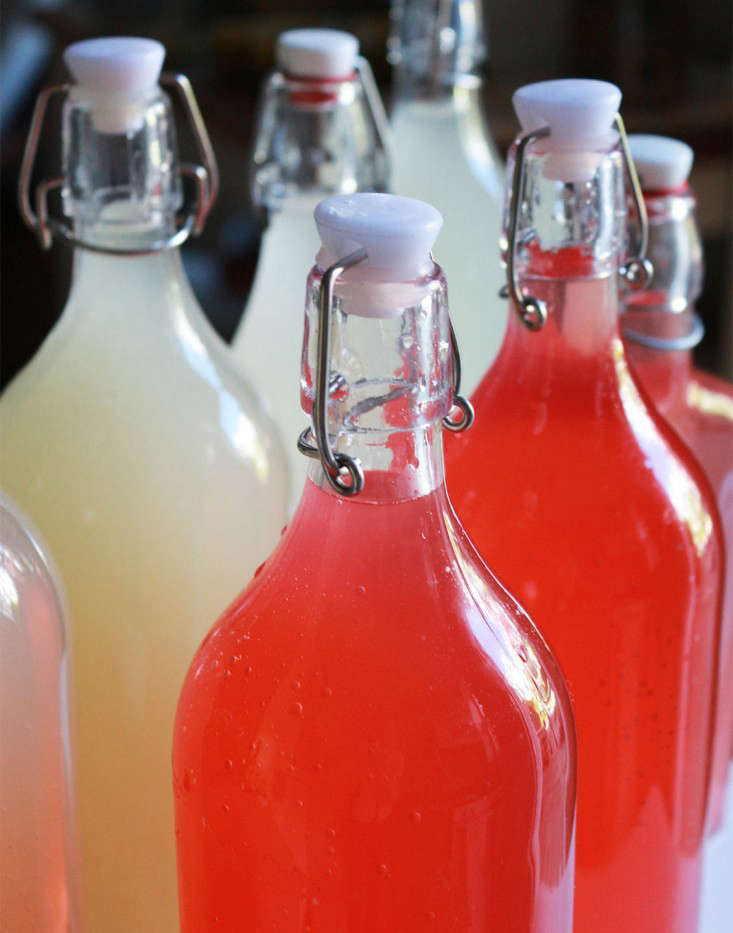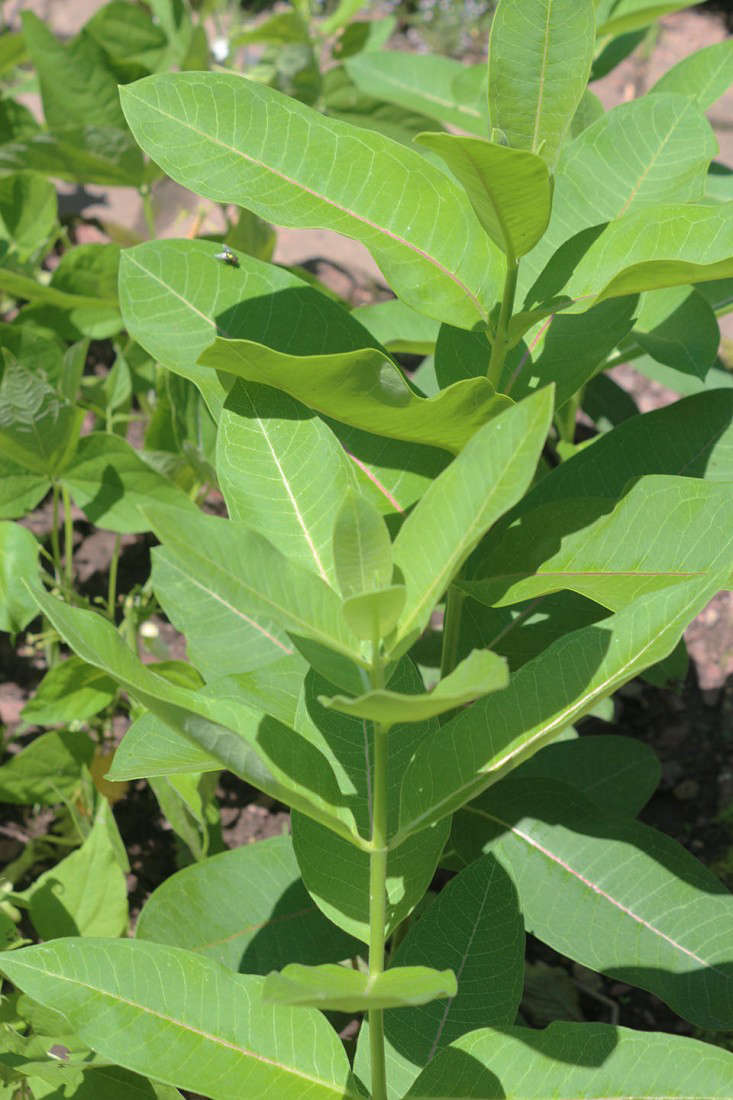Common milkweed (Asclepias syriaca) is one of the more unusual crops to be added recently to my Brooklyn farm (really a 12-by-10 plot in the middle of my city garden). I already have two other species for aesthetic pleasure and for pollinators. My milkweed starts came from Annie’s Annuals”.
Many parts of common milkweed are edible (see our Weeds You can Eat story). But if you have ever sniffed the summer fragrance of the nectar-rich flowers, you will understand why I was enchanted at the idea of capturing it and translating it into a drink. Read on for the recipe:
Photography by Marie Viljoen.
Above: While I may live to regret planting a milkweed species known to be an aggressive spreader, I am excited about two things. The first is simple: I want to eat it. I am hoping to provide myself with a domestic supply of a delicious indigenous plant.
Above: Common milkweed is a versatile wild vegetable, and also an aromatic; its nectar-rich flowers are strongly fragrant.
Above: Secondly. I will be happy is to appease the monarchists (my name for well-meaning butterfly advocates who object to any wild harvest of milkweed, regardless of context or population). Because when we talk about milkweeds, we talk about butterflies. Monarchs lay their eggs on milkweed leaves, which their larvae (caterpillars) eat. I won’t be eating the leaves. And monarchs are threatened by an unholy trinity of factors that includes deforestation, severe weather, and loss of habitat in their fly-path.
So yes, by all means plant more milkweeds (choose species indigenous to your region – and note that not all are edible!).
Above: While you can make a syrup by infusing simple syrup with flowers overnight, I enjoy fermenting the blooms to create a naturally effervescent soda that drinks well on its own, and is refreshing on a hot day with ice cubes and seltzer.
Issues of detonation accompany any fermentation, so please read more on the subject. I recommend Sandor Katz’s The Art of Fermentation (Chelsea Green, 2012). Pay special attention to Page 91.
Milkweed Flower Cordial
Ingredients:
- 2 ½ cups common milkweed flowers, prepared
- 2 cups sugar
- 6 cups water
- Peel of 1 lemon, in long strips
*Discard all the stem parts from the milkweed (they contain sticky latex). Keep only the individual flowers. Scissors perform this job quickly.
Combine the flowers, sugar, water, and lemon peel in a sterilized 1.5 liter jar. Stir well to dissolve all the sugar.
At this point you can either cover the jar’s mouth with a double layer of cheesecloth secured with rubber band or string (to deter fruit flies), or leave the lid on loosely. If you keep the lid on tightly you must loosen it once or twice a day to allow any accumulated gas from fermentation to escape (this is called “burping”). You may stir every day but I have made batches with no stirring, and fermentation occurred, regardless.
Above: On Day 2 or 3 (if you have not stirred) you will notice a gorgeous lilac suspension hanging just below flowers as they give up their color to the cordial.
Fermentation times will vary according to the moods of the wild yeast gods and temperature. But leave the jar at room temperature for from three to six days. For the first day or three you may notice no gas accumulation and wonder what the point is. But when the bubbles form, you are on your way to natural carbonation.
After the yeast really gets going the liquid will become gassy and the buoyant solids (flowers) may rise up and out of the jar. After a day of this I strain the flowers off, and gently strain the liquid a second time through rinsed cheesecloth.

Above: You may bottle the fizz in narrow neck screwtop bottles or in wire tops. Leave some head room (space between liquid and lid) so that if your liquid is very gassy when opened the bubbles have somewhere to go. It is safest to store them in the refrigerator—continuing fermentation can cause explosions. Cold retards yeast growth. If you are nervous, use plastic bottles for your first batch as they will swell when they need to be burped. Glass does not give you this clue.
To open, open slowly. If bubbles rise super-fast in the bottle’s neck, close again until they die down. Repeat until you can open without losing half your precious fizz to gushing.
Shake up with gin, lemon juice and a little maraschino syrup (milkweed is great match for cherries), and toast summer.
For more of our favorite summer cocktail recipes, see DIY: Raspberry Sparklers and DIY: A Summer Cocktail with Rose Geranium Simple Syrup.
Finally, get more ideas on how to successfully plant, grow, and care for milkweed with our Milkweed: A Field Guide.
Finally, get more ideas on how to plant, grow, and care for various perennial plants with our Perennials: A Field Guide.


















Have a Question or Comment About This Post?
Join the conversation